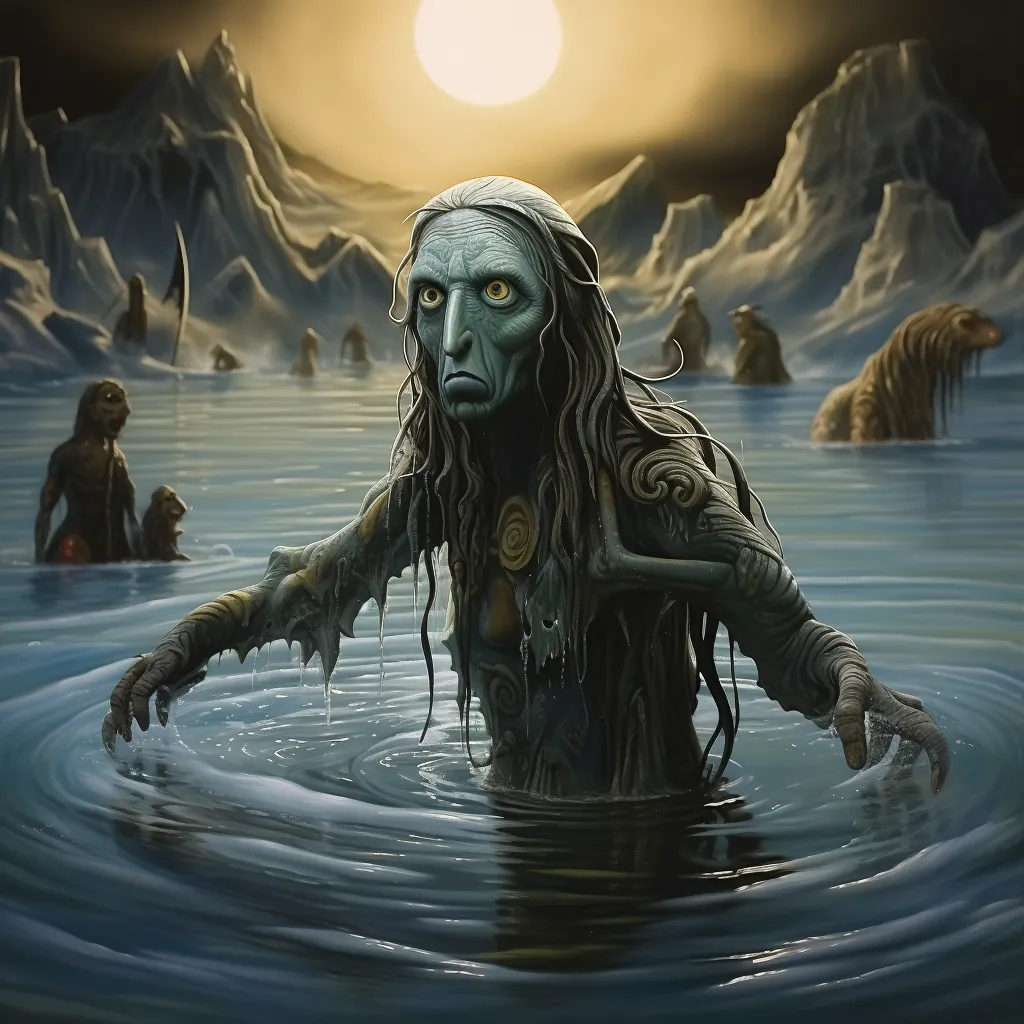The Enigmatic Qallupilluit: Guardians of the Arctic Shores
In the icy realms of Inuit mythology, the Qallupilluit—also known as Qalupalik—lurk beneath the frigid waters. These mysterious creatures patrol Arctic shorelines, waiting to capture any child who strays too close to the water’s edge. The myth of the Qallupilluit serves a protective purpose, warning children of the dangers hidden in the icy environment.
Get your dose of History via Email
What Do They Look Like?
Descriptions of the Qallupilluit vary, but certain features remain consistent. Most tales depict them with green, slimy skin, long hair, and extended fingernails. Their webbed hands, scales, and fins suggest a creature at home in the water. They wear an amautik—a traditional Inuit parka usually worn by women. Some stories say the amautik is crafted from eider duck feathers and serves to carry the children they abduct.
One particularly unsettling detail is the Qallupilluit’s ability to paralyze victims with a piercing sound from one of its flippers. In addition, the Qallupilluit can alter its appearance using a technique called pilutitaminik. While some versions refer to the creature with masculine pronouns, it is mostly depicted as feminine. This feminine version is said to use the children she kidnaps to maintain her long, flowing hair.

Lurking in the Depths: The Mythology
Qallupilluit dwell under Arctic waters, close to the shore, always ready to strike. They use cunning strategies to lure children, including an eerie, otherworldly hum that draws them nearer to the water. Once close enough, the Qallupilluit snatch their prey. What happens next depends on the story—some say the children are devoured, while others claim they are kept in a stasis-like state to sustain the Qallupilluit’s youth.
Despite their fearsome reputation, these creatures can be outsmarted. Some Inuit hunters discovered a way to bypass the Qallupilluit’s invulnerability. They would coax the creature into changing its shape, often into a seal or whale. Once transformed, the hunters could kill it and bring home a valuable catch.

Tales of Sacrifice and Survival
Not all encounters with the Qallupilluit are acts of random violence. Some stories tell of children being willingly offered to these creatures. One such tale involves a grandmother and her starving grandson. Unable to feed him, she calls upon the Qallupilluit to take him away, believing it to be a kinder fate. Eventually, as the tribe’s fortune changes, a young Inuit couple tracks down the boy. They find him tethered by seaweed, the Qallupilluit preventing his escape. The couple hides until sunrise, cutting him loose when the Qallupilluit is unable to drag him back into the depths. In other versions of the story, the child becomes a great hunter after being rescued.

The Qallupilluit in Modern Media
The Qallupilluit myth has found its way into various forms of media, captivating audiences beyond its Arctic origins. One of the most popular representations is in the children’s book A Promise Is A Promise by Robert Munsch and Michael Kusugak, where a young Inuit girl must outwit the Qallupilluit to save her siblings.
In the graphic novel Putuguq & Kublu & the Qalupalik by Roselynn Akulukjuk and Danny Christopher, the creature once again takes center stage. Similarly, The Qalupalik by Elisha Kilabuk and Joy Ang recounts an encounter between a young orphan and the Qallupilluit.
The legend also appears in the indie game Beneath Floes, which received critical acclaim for its portrayal of Inuit myths. Additionally, the animated short film Qalupalik, a project by the Nunavut Animation Lab, brings the creature to life in a vivid retelling. Even the television show Murdoch Mysteries nods to the Qallupilluit in its ninth season.
Interestingly, the Russian avant-prog band Kalutaliksuak took inspiration from this myth, naming themselves after the creature.
Conclusion
The Qallupilluit remains one of the most intriguing figures in Inuit mythology. Both feared and respected, this creature embodies the harsh realities of the Arctic environment while offering valuable lessons in survival and caution. Whether in ancient stories or modern media, the Qallupilluit continues to captivate and warn those who dare to venture too close to the icy shores.
Sources:

